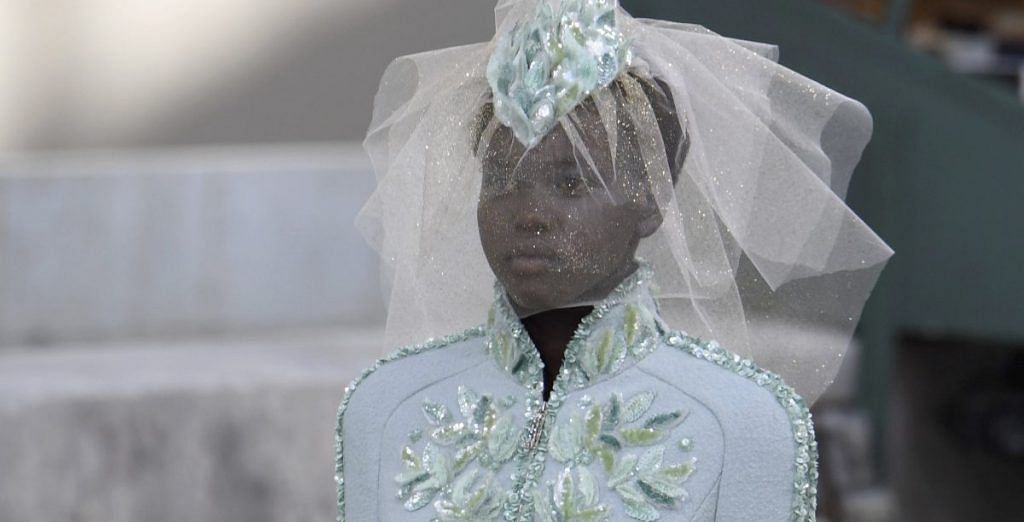A black model is still considered an adventurous, and not a normal, choice by most top fashion houses.
The world of fashion stood in awe when Chanel’s creative director Karl Lagerfeld made a black model close his Autumn show at the Grand Palais in Paris this week. Adut Akech made history by being only the second model in the fashion house’s 108-year-long existence to close the show as a Chanel bride. Akech’s joy at making history was expected.
For those less acquainted with the runway hierarchy, the opening and closing clothes and the models presenting those are considered the season’s standout, handpicked by the designer. While the one who opens the show sets the tone, the closing model leaves the after-taste.
Akech’s achievement as a closing model for the house is a wonderful feat given her background as a South Sudanese refugee camp-born immigrant in Australia, but at the same time, it feels eerie that she is only the second model to close a show for Chanel, 14 years after Alek Wek.
there are only two black brides in chanel history. ONLY TWO. alek wek (2004) adut akech (2018) pic.twitter.com/blUBgqx9S1
— laqerfeld (@laqerfeld) July 3, 2018
In all of Lagerfeld’s 35 years as creative director at the house, a black model figured only twice in his wild fashion fantasies because opening and closing of a show has primarily been a white privilege. Even a supermodel like Naomi Campbell has faced this discrimination. She was the first black model to ever open a Prada show in 1997; it took the house 20 years to feature another black model (Anok Yai) as its show-opener, in February this year.
Every time Campbell or younger models like Chanel Iman and Jasmine Tookes get to open or close a show, critics label such events as ‘historic’. But when will the fashion world stop celebrating such ‘historic’ feats and start treating black models on par with their white counterparts?
A black model is still considered an adventurous choice by most top fashion houses. Their skin colour is used as a contrast palette for fashion shows. Many houses also, perhaps, feel that featuring a black model in their show would ensure they are not named in the ‘racist’ list. Can racism be an excuse for high art?
This brings me back to British model Jourdan Dunn’s famous statement to The Guardian in 2013: “The people who control the industry… say if you have a black face on a magazine cover it won’t sell, but there’s no real evidence for that. It’s lazy”. Two years later, Dunn became the first black model to grace British Vogue’s cover in 12 years.
Fashion industry’s lack of diversity and inclusiveness has been talked about for a while now, and houses are fast mending their ways, waking up to the public’s changed consciousness. For British Vogue, it came with the appointment of Edward Enninful, the first black editor of the fashion magazine, in April last year.
If you scroll through the magazine’s archives, the covers show a change since Enninful’s appointment, from featuring only white models to now giving space to coloured or black model/celebrities.
Even the much awaited high-fashion Pirelli Calendar this year was about an all-black retelling of Lewis Carroll’s Alice in Wonderland. Lingerie giant Victoria’s Secret’s show in Shanghai last November had 17 black models, making up 30 per cent of the total number.
The fashion industry is slowly re-draping itself, one season at a time, but it will take a few more seasons before Akech’s message, ‘The beauty of having a dream, is watching it come to life,’ holds true for fellow black models. The thread and needle after all are still in the hands of white designers who are yet to give up their bias against black skin.
